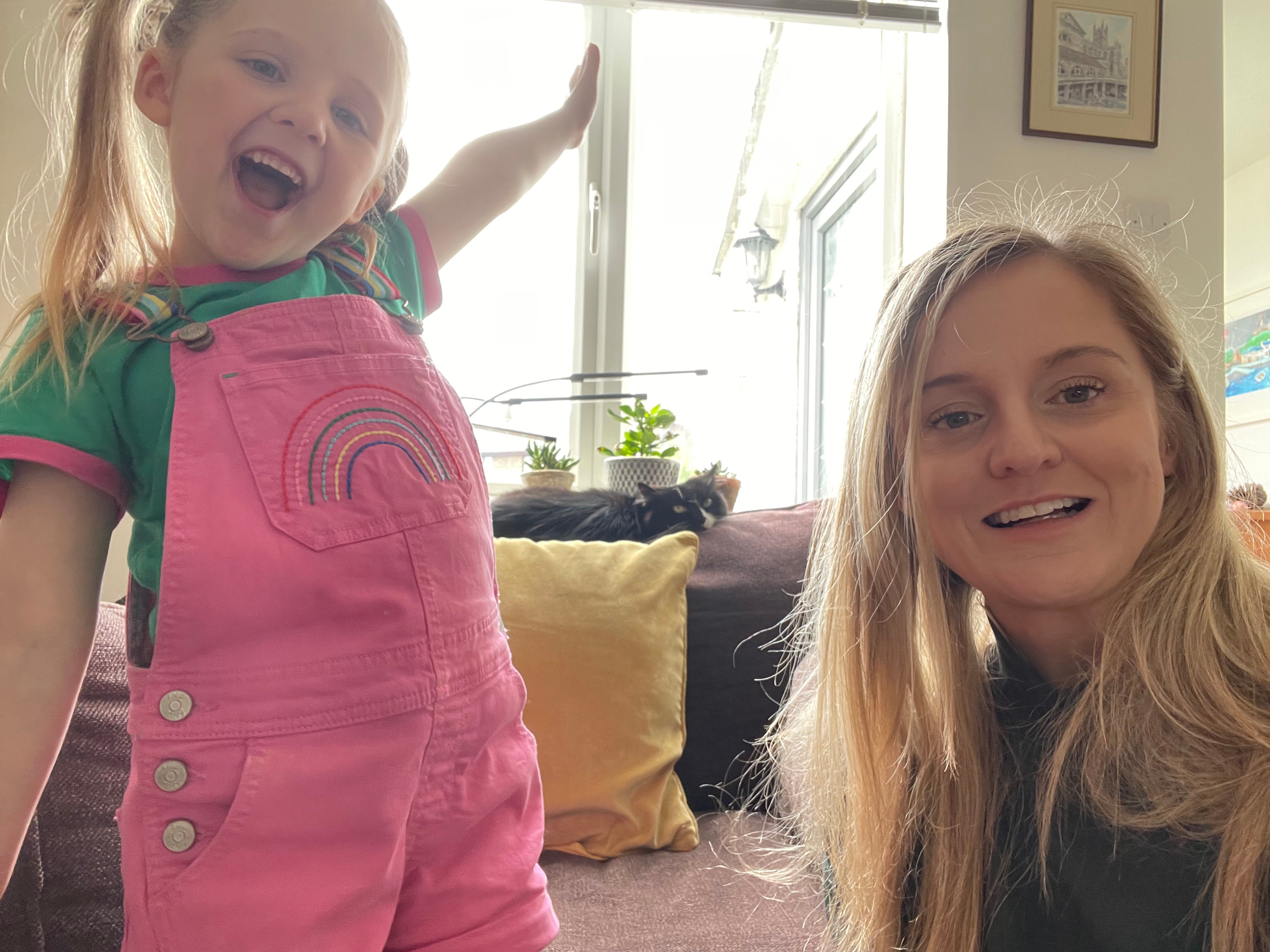Skin cancer is no joke: I’m one of the lucky ones but the threat of malignant melanoma still impacts my life
Like Sarah Ferguson, Rebecca Tidy has experienced malignant melanoma. She shares how her GP dismissed the danger twice – and explains why getting yourself checked out could just save your life


The Duchess of York, Sarah Ferguson, has been diagnosed with malignant melanoma, just six months after treatment for breast cancer. She had several moles removed during breast reconstruction surgery, with one of them being identified as cancerous.
Skin cancer rates in the UK are on the rise, with around 16,700 new cases per year. It’s now the fifth most common cancer in the country and the cause of around 2,600 deaths annually, according to Cancer Research statistics.
Though malignant melanoma isn’t the most common form of skin cancer – for every one case of malignant melanoma, up to 10 non-malignant melanoma skin cancers are diagnosed – it causes nearly as many deaths as all the other skin cancers combined.
Some of the world’s best-known celebrities have experienced malignant melanoma, including Khloe Kardashian, Molly-Mae Hague and Ewan McGregor. The duchess’s diagnosis is yet another poignant reminder of the dangers of the disease, which affects people of all ages and backgrounds.

I was first diagnosed with malignant melanoma at the age of 26. It’s fair to say I’d experienced heavy sun exposure in childhood and early adulthood; I was brought up on a farm near the coast and spent most of my time outside horse riding, swimming and sailing. I also spent much of my twenties teaching horse riding and training animals across the world, often in strong sun.
Cancer Research says that exposure to UV light is the main driver of malignant melanoma. It causes mutations in cells called melanocytes, which can eventually develop and spread across the body to form secondary cancer.
Like the duchess, it was a medical professional who took issue with my mole – but not a doctor. I’d been to the GP twice about this constantly changing large black mark – with ugly jagged edges – on my left shoulder blade. She’d assured me both times it wasn’t cancerous.
Fortunately, a physiotherapist questioned it during an appointment for severe shoulder pain. His wife happened to be a dermatology nurse and he called the department asking them to take a look, as he thought the GP was mistaken. He was concerned that my shoulder pain was caused by a malignant melanoma that had spread to my lungs, so the administrator gave me an appointment instantly.
I find it completely dehumanising that patients are routinely diagnosed with cancer in Britain, but then forced to wait three months to learn whether it’s at a stage that’s likely to kill them
I was convinced that the physio was wrong, given my GP’s firm stance on the issue. But the dermatologist took one glance at the mole – which by that point measured 5cm by 4cm – and instantly said it was a malignant melanoma. She told me she’d never seen such an “obvious-looking case” before.
The dermatologist called a colleague to ask if the surgeon could squeeze in an emergency operation that day. But there was no space and she was forced to conclude the appointment five minutes later with a promise that I’d get a letter in the post.
I checked my watch; the appointment had lasted around 10 minutes. It felt strange that my entire life had changed in this short space of time, yet the dermatologist had made no acknowledgement of the emotional impact of the news. My cousin’s 23-year-old husband had been diagnosed with stage four malignant melanoma the previous month – I was truly shocked to be diagnosed with the disease myself.
Four weeks later, I went back to the hospital for the first operation, going home the next day. I wasn’t bothered by the physical pain from the surgery, yet I was terrified of the possible outcome. The fear of what the result would be lingered in the back of my mind constantly, no matter what I did, and was often overwhelming.

It was 12 weeks from the date of my initial malignant melanoma diagnosis to learning the stage of the cancer. I developed a swelling in my neck – a sign the cancer may have spread – during this wait and was sent back to the hospital, where a surgeon biopsied my lymph nodes. During this time, my cousin’s husband died of the disease and my mental health hugely deteriorated. I developed OCD and stopped sleeping, eventually developing a longer-term dependence on prescription drugs.
Looking back, I find it completely dehumanising that patients are routinely diagnosed with cancer in Britain but are then forced to wait three months to learn whether it’s at a stage that’s likely to kill them. The delay was torturous, yet it’s simply due to limited resources. In the US, where healthcare is, admittedly, hugely expensive, patients often receive results on the same day.
Sarah Ferguson is “really thinking about her life and mortality” after her most recent cancer diagnosis, a source told The Daily Mail. I spent considerable time reflecting on ill health, life and death, while anxiously waiting to learn the staging of my own cancer. My dad died of cancer when I was young, so it brought back difficult childhood memories of his illness, too.
I was hugely relieved when I learned that the melanoma was considered a “stage one” cancer, as it was just under 2mm thick. The biopsy of my lymph nodes suggested I’d experienced an infection soon after surgery, which was – apparently – an unfortunate coincidence. There was no evidence that the cancer had spread.
I spent considerable time reflecting on ill health, life and death, while anxiously waiting to learn the staging of my own cancer
Though I had a large cut down my back, I was surprised to learn I needed to return to hospital for another operation, as the surgeon hadn’t managed to cut away enough tissue. I was told this is an important safety precaution to ensure there are no cancerous cells left in the surrounding area.
In the end, I had three surgeries on the area – followed by two skin grafts – as I developed an infection. Thankfully, I didn’t need radiotherapy or chemotherapy, as the doctors believe they managed to remove all of the cancerous cells.
I had several moles removed and biopsied over the following year, none of which were cancerous. However, I’ve since had a malignant melanoma on my arm in 2019, and another on my abdomen in 2021. The second one came at a particularly inconvenient time: I’d just become a single parent to my two-year-old daughter and it was during a Covid lockdown.
At least I was much more prepared the second and third time around. I knew how to recognise the signs of developing malignant melanoma, and thus the surgeon managed to remove them at even earlier stages – though, of course, it wasn’t anxiety-free.

Cancer often leaves a long-term impact on lives even after it’s gone. The uneasy feeling that it may return never truly leaves and, practically speaking, it remains impossible to get life insurance. I made the difficult decision to switch career after my diagnosis – I realised that working with my beloved horses would probably involve too much sun exposure long term.
For a while, I felt like I’d lost a key part of my identity: I’d always considered myself a “horse” and “ocean” person. My body is covered in big scars but the biggest challenge of all was learning to love my pale skin. I was bullied for being pale during childhood, so it’s still a journey to acceptance.
But, marvellously, my quarterly dermatology checks have become annual. I’ve passed my five-year survival marker, something that feels strangely significant. Nowadays, there’s very little in life that fazes me; I remain unstressed and even happy in the most challenging of circumstances.
After all, I’d have been the most joyful person in the world if, a few years ago, I’d known that I’d still be alive and well with a five-year-old daughter in 2024.

How to check for skin cancer
Check yourself regularly
Cancer Research advises everyone to regularly check the size, shape, colour and texture of their moles. They say you should visit the GP for advice if you’re unsure whether they’re healthy.
Ask for a second opinion
Based on my own initial experience with my doctor, I strongly feel that everyone should ask their GP to explain why a mole isn’t a malignant melanoma. Doctors are often busy and all humans make mistakes, so asking that question empowers you to learn about your health. If they fob you off and you are still concerned, you’re entitled to request a second opinion.
Take photos of your moles
The hospital’s dermatology nurse took photos of my entire body and close-up images of larger moles, while I stood in just my bra and pants after my diagnosis. I keep these snapshots in a drawer at home and bring them along to every appointment, so we can check whether any moles have changed. My sister was concerned that a couple of moles were growing, so she took some photos of them next to a ruler using her phone. She returned to the GP when she realised they were changing and later had them removed.
Join our commenting forum
Join thought-provoking conversations, follow other Independent readers and see their replies
Comments
Bookmark popover
Removed from bookmarks